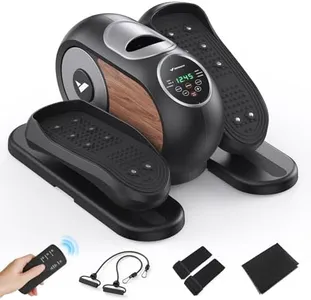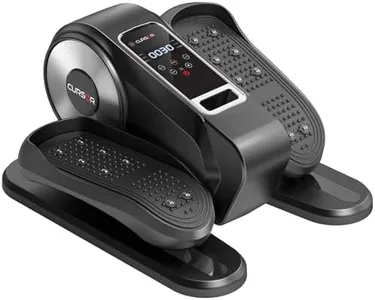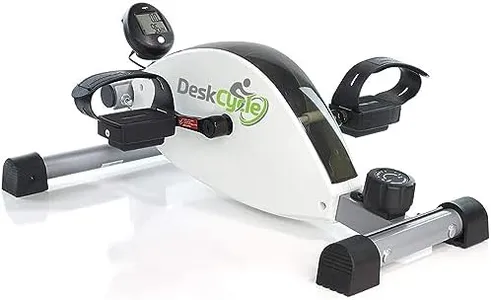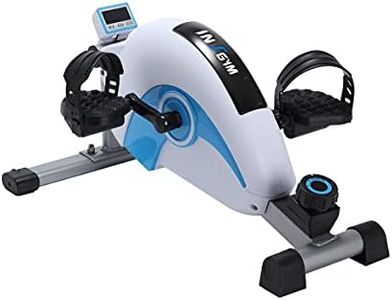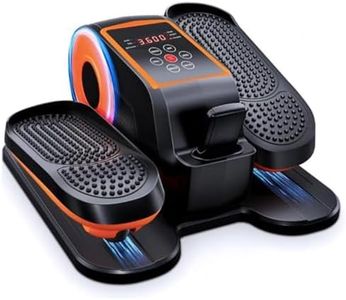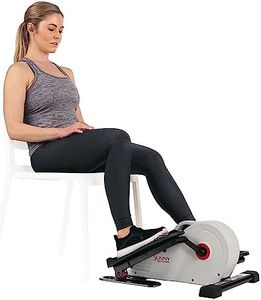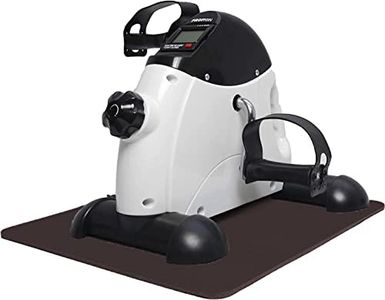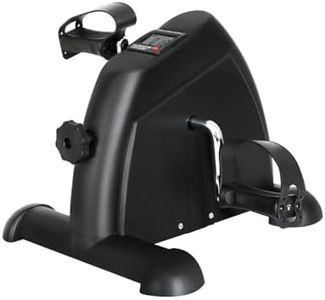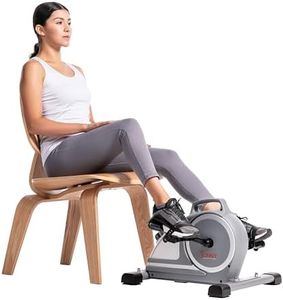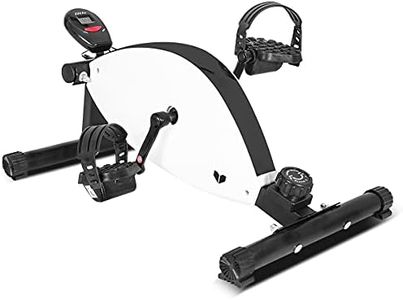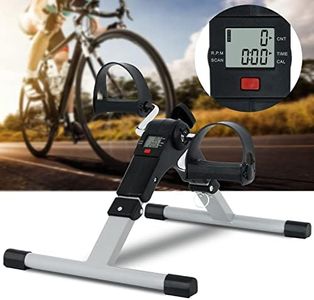We Use CookiesWe use cookies to enhance the security, performance,
functionality and for analytical and promotional activities. By continuing to browse this site you
are agreeing to our privacy policy
10 Best Under Desk Bike
From leading brands and best sellers available on the web.Buying Guide for the Best Under Desk Bike
Choosing an under-desk bike is a smart way to stay active, especially if you spend a lot of time at a desk. These devices fit under your workspace and allow you to pedal while working, promoting movement and helping you burn calories throughout the day. To make the right choice, it's important to think about your workspace, your fitness goals, and how often you plan to use the bike. Consider the size of your desk, your comfort preferences, and how quiet the bike will be during use.Size and ClearanceSize and clearance refer to how much space the under-desk bike takes up and how well it fits under your desk. This is important because if the bike is too large or tall, it may not fit or might cause your knees to bump the underside of your desk. Generally, low-profile bikes are better for shorter desks, while higher-profile bikes might offer more comfortable pedaling if you have more space. To choose the right one, measure the height between your floor and the underside of your desk, and compare that to the height of the bike at its highest pedal position. If space is tight, prioritize a compact model.
Resistance LevelsResistance levels determine how hard it is to pedal the bike, affecting how strenuous your workout is. Adjustable resistance is important because it lets you switch between an easy ride while working or a heavier workout during breaks. Most bikes offer several resistance settings: low resistance is easier and more suitable for long periods, while high resistance increases calorie burn and muscle engagement but can be tiring. Think about how you plan to use it—if you want light movement while typing, lower resistance is key; if you want real exercise, look for a wider range of settings.
Noise LevelNoise level tells you how quiet the bike is while in use, which matters in shared or quiet environments. Some bikes use magnetic resistance and belt drives to reduce noise, while others might be louder due to different mechanisms. Generally, magnetic bikes are quieter than friction-based ones. If you work in a quiet office or you're on calls frequently, pick a bike that's specifically described as whisper-quiet, or one that uses magnetic resistance technology.
Pedal DesignThe design of the pedals can affect your comfort and how secure your feet feel during use. Some under-desk bikes have wide, textured pedals with straps, while others are simpler. If you plan to use the bike with different types of shoes—or even barefoot—look for adjustable straps and non-slip surfaces. For basic movement, standard pedals should work, but for more intense activity, better grip and secure straps can reduce slipping and improve safety.
Display and TrackingDisplay and tracking features show you things like pedal revolutions, time, distance, and calories burned. While not necessary, they can help keep you motivated and measure your progress. Simple models might have a basic counter, while others offer more stats and even connect to apps. If you like tracking your exercise or need motivation to stay consistent, a built-in display or app compatibility may be useful for you. If you're just pedaling casually, you might not need detailed tracking.
Portability and WeightPortability and weight refer to how easy the under-desk bike is to move and store. Lighter bikes are easier to carry between rooms or put away when not in use, while heavier ones tend to stay in place better during use. If you need to move your bike regularly or work in different locations, choose a model with a handle and manageable weight. If stability is a bigger priority because you’ll leave it in one spot, a heavier bike may feel more secure during faster pedaling.
